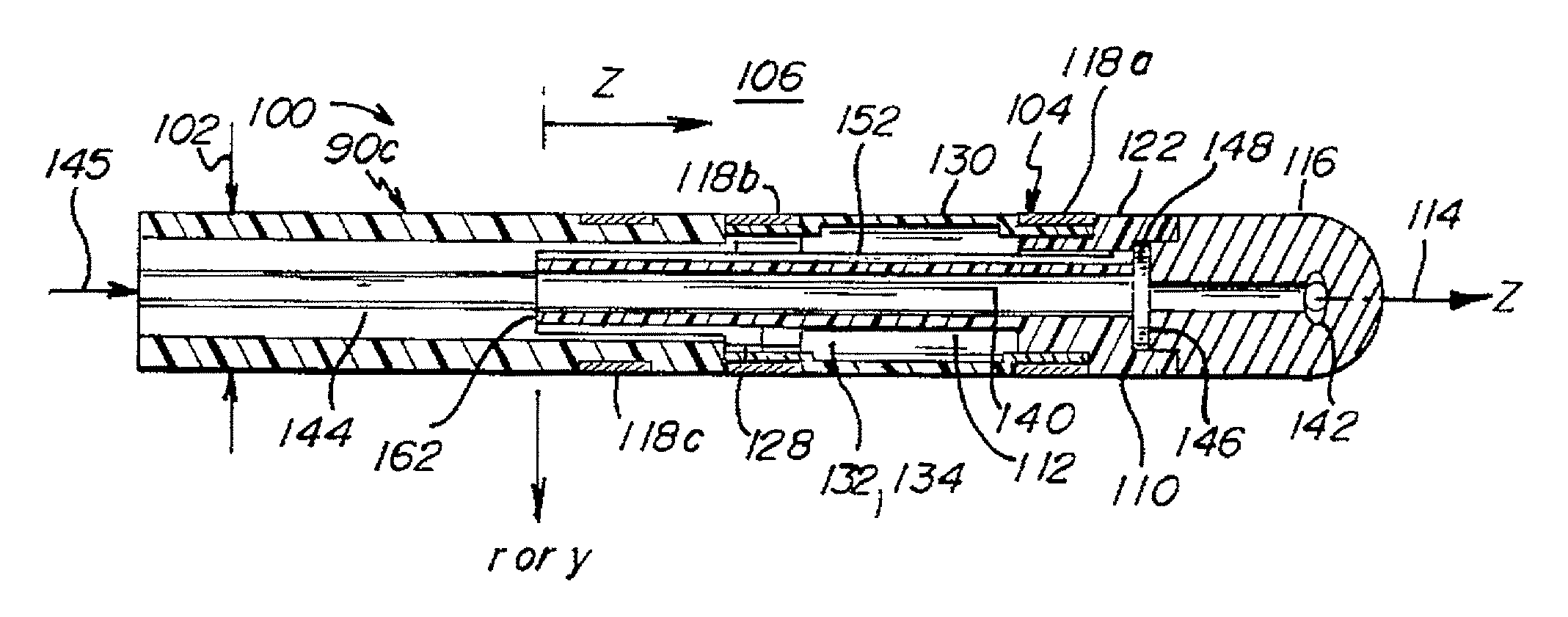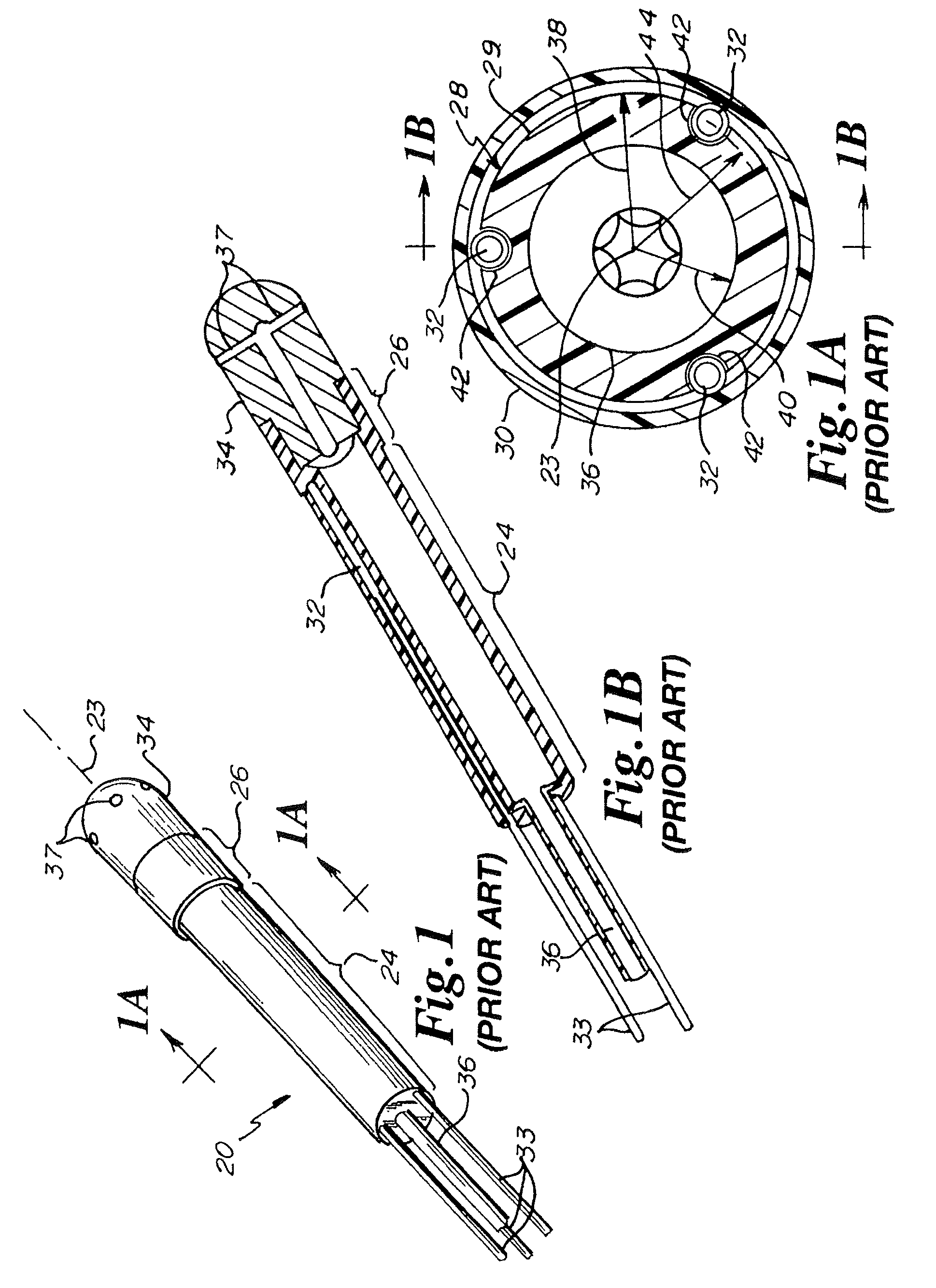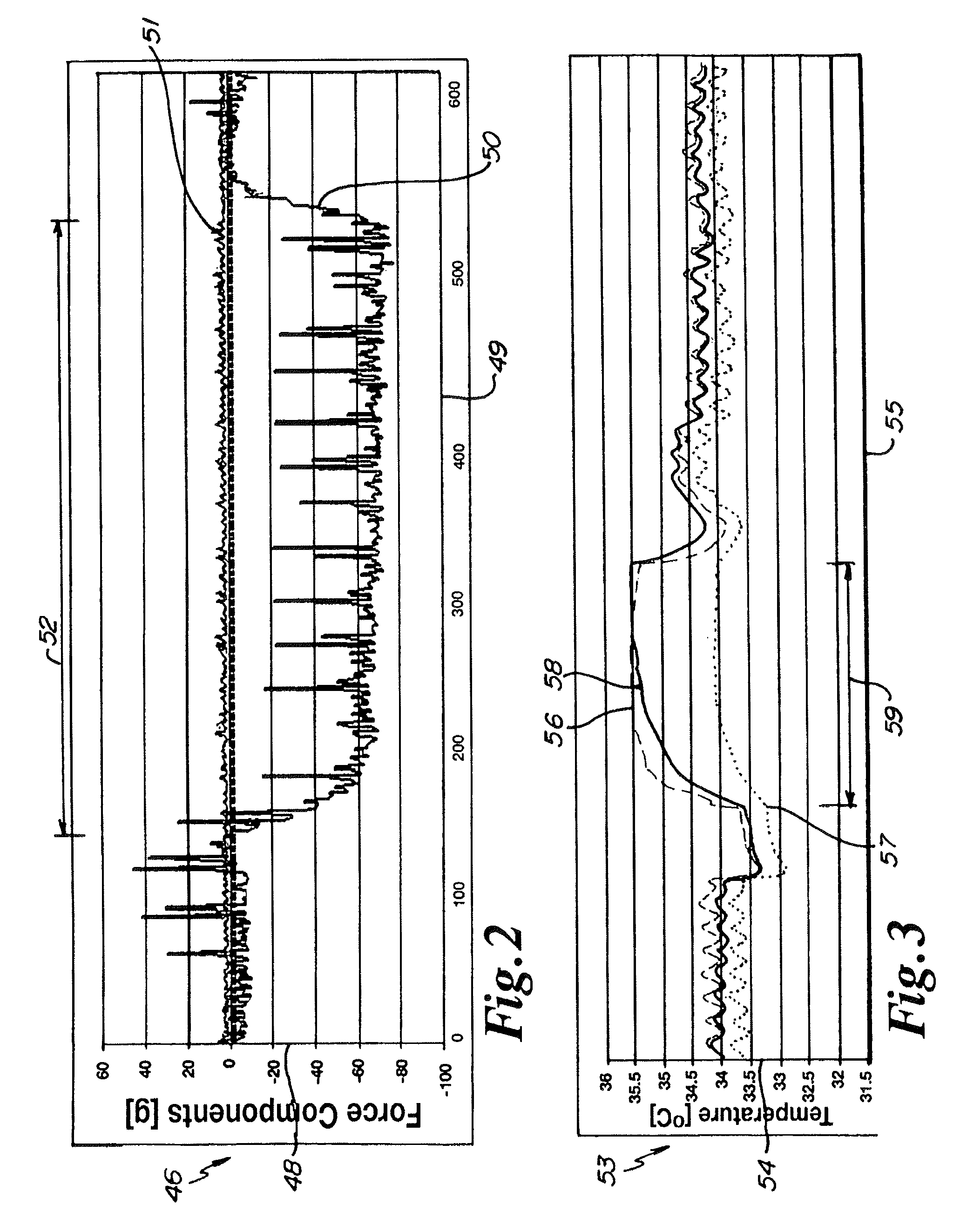Temperature compensated strain sensing catheter
a temperature-compensated, catheter technology, applied in the field of surgical catheters, can solve the problems of affecting the wavelength bandpass that is reflected by the grating, the fbg refractive index, and the use of strain sensors can be negatively impacted
- Summary
- Abstract
- Description
- Claims
- Application Information
AI Technical Summary
Benefits of technology
Problems solved by technology
Method used
Image
Examples
Embodiment Construction
[0039]Referring to FIGS. 1, 1A and 1B, a strain sensing assembly 20 comprising a deformable body 22 that defines a central axis 23 having a sensing portion 24 and a collar portion 26 is depicted. The sensing portion 24 of the strain sensing assembly 20 is further characterized as including a stem 28 having an outer surface 29 that is shrouded by a sleeve 30. A trio of fiber Bragg gratings 32, each sourced via a fiber optic 33, are operatively coupled to the stem 28. In the depicted embodiment, the collar portion 26 is operatively-coupled to an ablation head 34. An irrigation passage 36 passes through the stem 28 and ablation head 34, terminating at the exterior of the ablation head 34 via a plurality of transpiration passages 37.
[0040]In this embodiment, the strain sensing assembly 20 is characterized as having a stem radius 38 that is approximately 3½ times the radius 40 of irrigation passage 36. The fiber Bragg gratings 32 are mounted in a trio of grooves 42 on the outer surface 2...
PUM
 Login to View More
Login to View More Abstract
Description
Claims
Application Information
 Login to View More
Login to View More - R&D
- Intellectual Property
- Life Sciences
- Materials
- Tech Scout
- Unparalleled Data Quality
- Higher Quality Content
- 60% Fewer Hallucinations
Browse by: Latest US Patents, China's latest patents, Technical Efficacy Thesaurus, Application Domain, Technology Topic, Popular Technical Reports.
© 2025 PatSnap. All rights reserved.Legal|Privacy policy|Modern Slavery Act Transparency Statement|Sitemap|About US| Contact US: help@patsnap.com



